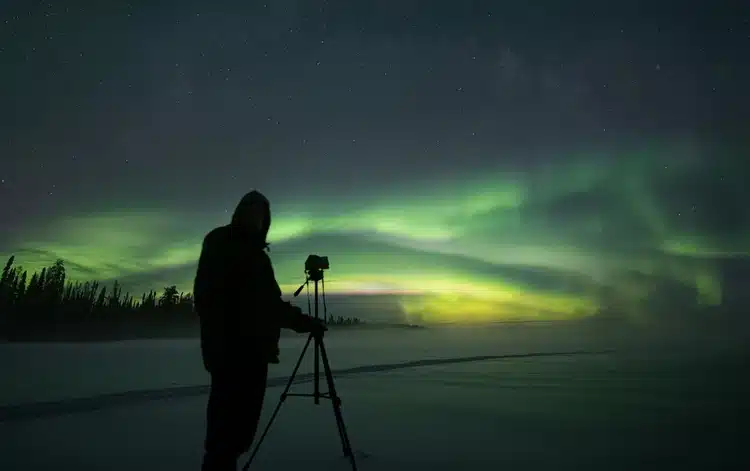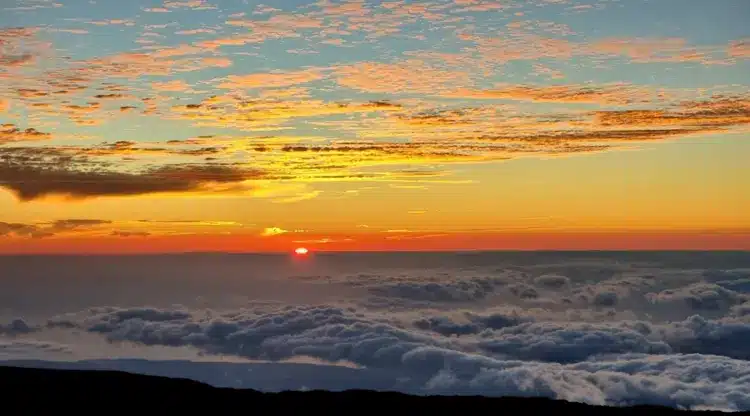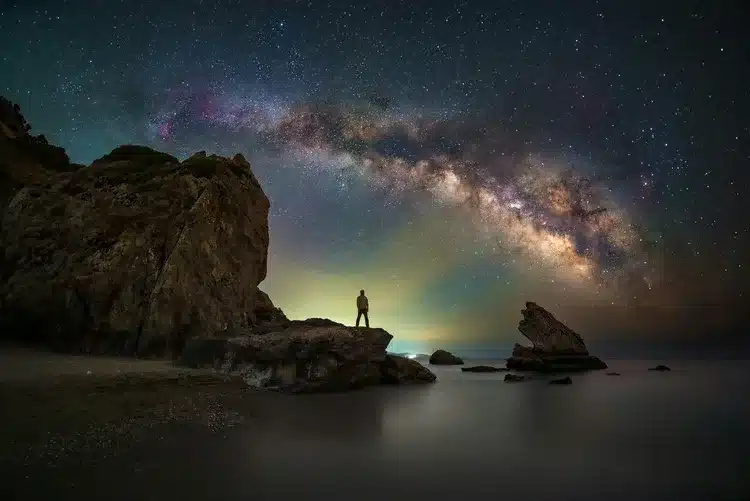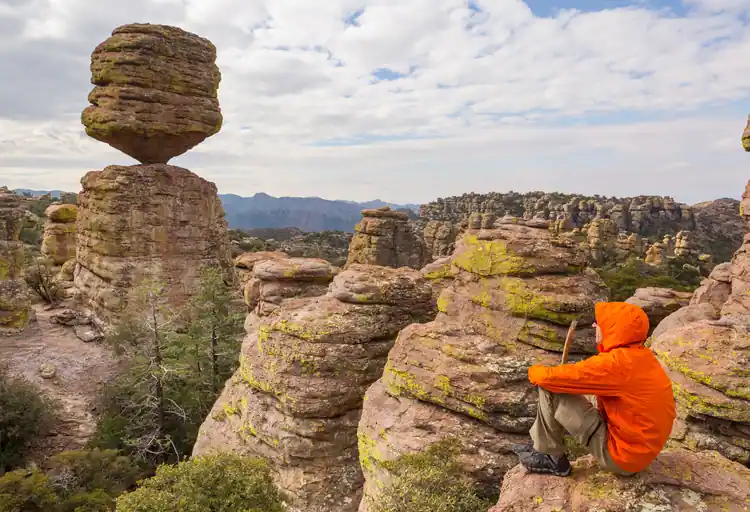You know how we always complain about not being able to see the stars in the city? Well, dark sky parks are the answer to our celestial prayers. These magical places are specially designated areas where light pollution is kept to an absolute minimum, allowing us mere mortals to witness the night sky in all its glory.

In this article, I’m going to spill the beans on everything you need to know about dark sky parks. We’ll explore what they are, where to find the best ones, and how to make the most of your stargazing adventure. So, grab a cup of coffee (or hot chocolate, if that’s your jam), and let’s dive into the wonderful world of dark skies!
Table of Contents
What Are Dark Sky Parks?

Okay, so picture this: you’re in a place so dark, you can barely see your hand in front of your face. But look up, and BAM! The entire universe seems to unfold before your eyes. That, my friends, is the magic of a dark sky park.
Dark sky parks are specially protected areas where artificial light is strictly controlled. The whole point is to preserve the natural darkness of the night sky, allowing us to see the stars, planets, and other celestial objects in all their glory. It’s like stepping into a real-life planetarium, only better!
Now, you might be wondering, “Who’s in charge of all this?” Well, let me introduce you to the International Dark-Sky Association (IDA). These folks are the superheroes of the night sky, working tirelessly to protect our view of the stars. They’re the ones who designate and certify dark sky parks around the world.
For starters, these parks are a boon for the environment. Artificial light at night can disrupt wildlife—sea turtle hatchlings, for example, can become confused by beach lights and head inland instead of toward the ocean. It’s a striking example of how light pollution can impact nature.
But it’s not just about the critters. Dark sky parks are like outdoor classrooms, teaching us about astronomy, ecology, and the importance of preserving our natural environment. Plus, they’re a stargazer’s paradise! Where else can you see the Milky Way arching across the sky like a celestial rainbow?
And let’s not forget the simple joy of standing under a sky full of stars. In our fast-paced, always-connected world, there’s something profoundly peaceful about it. It’s a chance to disconnect from our devices and reconnect with the universe. Trust me, it’s good for the soul!
Top Dark Sky Parks Around the World
Alright, buckle up, stargazers! We’re about to take a whirlwind tour of some of the best dark sky parks around the globe.
First stop: North America. If you’re in the States, you’ve got to check out Death Valley National Park. Now, I know what you’re thinking – isn’t Death Valley, well, dead? But let me tell you, at night, this place comes alive! You’ll see the Milky Way stretching from horizon to horizon there. It’s like someone spilled a jar of glitter across the sky!
Hopping across the pond to Europe, we’ve got Northumberland National Park in the UK. Now, I haven’t been there personally (it’s on my bucket list!), but I’ve heard it’s absolutely stunning. Imagine stargazing among ancient Roman ruins – talk about a blast from the past!

For those of you down under (or if you’re up for a long-haul flight), the Aoraki Mackenzie International Dark Sky Reserve in New Zealand is a must-visit. A friend of mine went there and wouldn’t shut up about it for weeks. The southern sky is a whole different ballgame. Southern Cross, anyone?
And if you’re feeling really adventurous, how about the NamibRand Nature Reserve in Namibia? Africa’s first dark sky reserve, this place is supposed to be otherworldly. Just picture it: stars twinkling above, lions roaring in the distance. Now that’s what I call a wild night out!
I gotta say, visiting these parks will give you a whole new perspective on our place in the universe. There’s nothing quite like seeing the Milky Way reflected in a still lake, or watching a meteor shower from the top of a mountain. It’s humbling and exhilarating all at once.
Top Dark Sky Parks in US
If you’re craving an unforgettable stargazing experience without needing a passport, you’re in luck. The U.S. is home to some of the most breathtaking dark sky parks on the planet.
These specially designated spots offer some of the clearest views of the night sky, free from the blinding effects of urban light pollution. Whether you’re gazing at the Milky Way from a desert, marveling at meteors over a mountain range, or catching a glimpse of distant planets, these parks are a stargazer’s dream come true. So, grab your telescope (or just your eyes) and get ready to dive into the top international dark sky parks across the U.S.!
These parks are perfect for disconnecting from the modern world and getting lost in the brilliance of the stars. So, next time you’re planning an adventure, consider leaving the city lights behind and embracing the natural glow of the night sky. Once you’ve experienced the stars in their full glory, it’s an unforgettable sight that stays with you.
What to Expect at a Dark Sky Park

So, you’ve decided to visit a dark sky park. Awesome choice! But what exactly should you expect? Well, let me break it down for you.
First things first: darkness. And I mean real, proper darkness. But once your eyes adjust, get ready for a show! The sky comes alive with more stars than you ever thought possible. The Milky Way stretches across the sky like a cosmic highway. And if you’re lucky, you might even spot some planets or deep-sky objects like nebulae and galaxies.
Many dark sky parks offer educational programs and star parties. These are fantastic opportunities to learn from the experts. Also some parks have specialized gear and observatories open to the public. I’m talking big, powerful telescopes that can show you things you’ve only seen in astronomy books. It’s like having a front-row seat to the cosmos!
Now, let’s talk about accommodation. Options vary depending on the park, but many offer camping facilities. There’s something magical about falling asleep under a blanket of stars. Just be prepared for chilly nights.
Some parks also have lodges or nearby hotels if roughing it isn’t your style. Whatever you choose, make sure to book in advance. These places can get pretty popular, especially during meteor showers or other celestial events.
Remember, each dark sky park is unique, with its own set of programs, facilities, and rules. Do your homework before you go to make the most of your visit. And most importantly, prepare to be amazed. The night sky has a way of putting things into perspective. It’s a reminder of how vast and beautiful our universe really is.
Planning Your Dark Sky Park Visit

Alright, future stargazers, let’s talk about planning! Trust me, a little preparation goes a long way when it comes to making the most of your dark sky adventure. I’ve had my fair share of “I wish I’d known that before” moments, so let me save you some trouble!
First up: timing. When it comes to stargazing, not all nights are created equal. You’ll want to plan your visit around the new moon for the darkest skies possible.
Seasons matter too. Summer might seem ideal, but don’t discount winter! Yeah, it’s colder, but the air is often clearer, making for some spectacular viewing. Just bundle up!
Now, let’s talk gear. A red flashlight is an absolute must. Regular white light will ruin your night vision (and annoy other stargazers). I use a headlamp with a red light setting – hands-free and practical!
Warm clothing is crucial, even in summer. It can get surprisingly chilly at night, especially if you’re sitting still. Layer up!
If you’re into photography, bring a sturdy tripod and a camera that allows for long exposures. Oh, and don’t forget extra batteries – the cold can drain them faster than you’d think.
When it comes to etiquette, remember: respect the darkness. Use red lights, keep noise to a minimum, and leave no trace. We want to keep these parks pristine for future stargazers!
And hey, while you’re there, why not try your hand at identifying constellations? There are some great apps out there that can help. Just remember to put your phone in red light mode – your fellow stargazers will thank you!
Planning a visit to a dark sky park might seem like a lot of work, but trust me, it’s worth it. There’s nothing quite like seeing the Milky Way stretch across the sky, or catching a glimpse of a shooting star. It’s a reminder of how vast and beautiful our universe really is. So go ahead, plan that trip. The stars are waiting!
Beyond Stargazing: Other Activities in Dark Sky Parks

Now, don’t get me wrong—stargazing is awesome. But did you know there’s a whole world of activities to explore in dark sky parks once the sun goes down? Oh yeah, nighttime is the right time for all sorts of adventures!
For example, many dark sky parks offer night hikes, where starlight (and a trusty red flashlight) can guide you through nature like you’ve never seen before. Nocturnal critters come to life, and you might spot owls, bats, or even a fox! It’s like stepping into a completely different world.
And let’s not forget about the sounds! Without the usual daytime noise, you’ll hear things you might never have noticed before. The rustling of leaves, the hoot of an owl, the chirping of crickets—it’s nature’s own symphony. Just be sure to watch your step, it’s easy to get distracted by the beauty of the night sky!
For photography enthusiasts, many parks offer astrophotography workshops. Even if you’re new to it, there’s something magical about capturing the Milky Way or star trails. Fair warning though—it can get addictive! Some start in astrophotography with just their smartphones and soon find themselves eyeing fancy cameras and lenses.
But here’s something really cool—some parks offer cultural and historical experiences related to astronomy. You can attend programs about Native American star legends, for example, and discover how different cultures have their own stories for the constellations. It’s mind-blowing to realize how many interpretations of the night sky exist!
If mythology is your thing, you’re in for a treat. Learning the stories behind constellations like Perseus, Andromeda, and Orion adds a whole new dimension to stargazing. It’s like watching a soap opera unfold in the sky!
Some parks even have planetariums or observatories where you can dive deeper into the cosmos. Looking through a powerful telescope at Saturn’s rings or distant galaxies is an unforgettable experience that brings the vastness of space into perspective.
So while the stars are undoubtedly the main attraction, don’t forget to explore the other activities these parks offer. They’ll deepen your appreciation of the night sky and make your dark sky park experience even more memorable. Who knows? You might even discover a new hobby or interest along the way!
The Future of Dark Sky Parks

You know, every time I visit a dark sky park, I can’t help but think about the future. These places are like windows to the cosmos, and man, we need to keep them open!
The good news is, dark sky parks are gaining popularity. More and more people are discovering the magic of a truly dark night sky. I mean, once you’ve seen the Milky Way stretching across the heavens, how can you not be hooked? It’s like the universe’s way of saying, “Hey there, remember me?”
New dark sky parks are popping up all over the world. It’s not just about remote wilderness areas anymore. Some towns and cities are getting in on the action too, working to reduce light pollution and create urban star parks. How cool is that? Imagine being able to stargaze right in your backyard!
But here’s the thing – it’s not all stardust and meteor showers. Dark sky preservation faces some real challenges. Light pollution is a tough nut to crack. I remember chatting with a park ranger who told me about their constant battle against encroaching light from nearby towns. It’s like trying to hold back the tide with a broom!
Climate change is another big concern. Changes in weather patterns can affect sky clarity, and rising temperatures might make some current dark sky sites less ideal for stargazing. It’s a sobering thought, isn’t it?
But don’t worry, it’s not all doom and gloom! There’s a lot we can do to help. Simple things like using dark sky friendly lighting at home can make a big difference.

Visiting dark sky parks and supporting their programs is another great way to help. It shows that there’s demand for these incredible places. Plus, you get to see amazing night skies – win-win!
And hey, spread the word! Take your friends and family to a dark sky park. Show them the wonders of the night sky. Once people see what we’re missing under light-polluted skies, they’re often inspired to take action.
The future of dark sky parks is in our hands. With a little effort and a lot of stargazing, we can ensure that future generations will have the chance to look up and be amazed. After all, we’re all made of stardust – shouldn’t we be able to see our origins twinkling above us?
A Quick Summary
Wow, what a journey we’ve been on! From the basics of dark sky parks to planning your own celestial adventure.
You know, every time I visit a dark sky park, I’m reminded of how small we are in the grand scheme of things. But instead of feeling insignificant, I feel connected to something much bigger than myself. It’s a humbling and exhilarating experience that I think everyone should have at least once in their life.
Dark sky parks are more than just places to see stars. They’re reminders of our place in the universe, sanctuaries for nocturnal wildlife, and living laboratories where we can learn about our cosmos. They’re also a call to action – a reminder of what we stand to lose if we don’t take care of our environment.
So, what are you waiting for? Start planning your dark sky adventure! Whether it’s a trip to Death Valley, a journey to the southern hemisphere to see new constellations, or even just a visit to a local star party, there’s a whole universe out there waiting to be explored.
Remember, every time we look up at a dark, star-filled sky, we’re looking at the same view that inspired our ancestors, sparked scientific revolutions, and continues to fuel our imagination and exploration. It’s a view worth protecting, don’t you think?
So go on, get out there and reach for the stars. Trust me, it’s an experience you’ll never forget. Clear skies, fellow stargazers!








